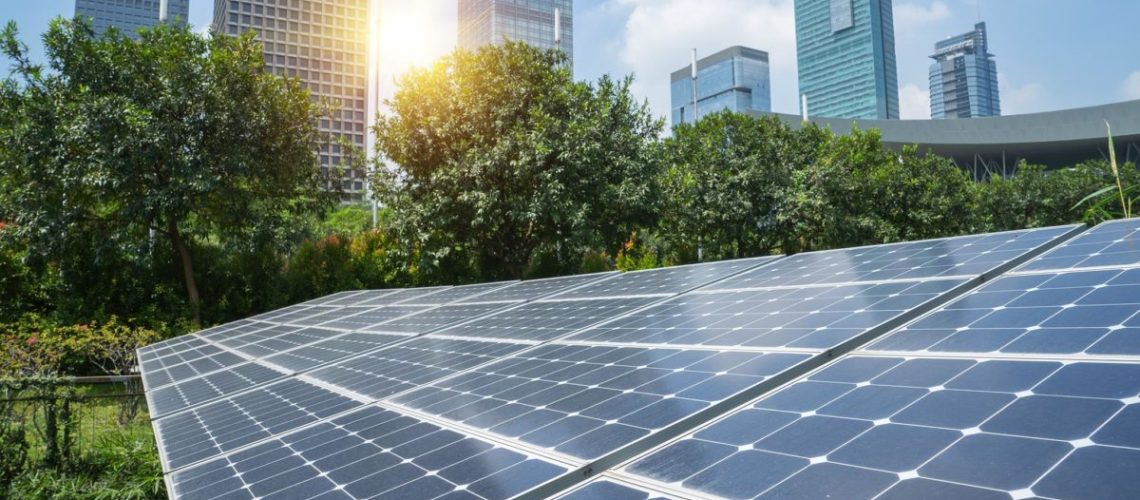The cumulative total of community solar installations is expected to reach 14 GW in the United States by 2028, according to a report by Wood Mackenzie.
As of the first half of 2023, the Solar Energy Industries Association (SEIA) reported that over 5.8 GW of community solar had been installed across the United States. There are 41 states with at least one community solar project installed and operational, with at least 19 states recognizing the benefits of shared renewables by encouraging their growth through policy and programs.
This sector is expected to grow considerably in a short time, with Wood Mackenzie projecting that cumulative installations could reach 14 GW by 2028, more than doubling the total in less than five years.
Community solar allows residents, small businesses, organizations, and municipalities to subscribe to a portion of a solar asset’s electricity generation to receive credit on their electricity bills for the power it generates. One of the major benefits of community solar is it opens access to customers that may not have a suitable roof or financial situation for rooftop solar.
As consumer protection practices, Department of Energy recommends that community solar programs ensure subscribers receive about 20% savings on their electricity bills, are not assessed exit or termination fees, and that compliance mechanisms are in place to ensure the community solar assets deliver on their expected generation.
Community solar is in a nascent stage in many states, and requires more program structuring, regulatory support, and community engagement to build out. The report points to landmark markets like New York and Illinois that can serve as models for implementing a successful community solar program.
“Near-term growth in Wood Mackenzie’s national outlook is driven by robust pipelines in existing state markets like New York and Illinois. Longer-term, newer state markets support lasting growth as mature markets saturate. Additionally, developers will begin to benefit from the incentives within the Inflation Reduction Act as soon as this year,” said Caitlin Connelly, research analyst for Wood Mackenzie.
Wood Mackenzie expects 7.6 GWdc of new community solar will come online in existing state markets between 2024 and 2028, and the national total of community solar installations are expected to pass 10 GW of cumulative capacity in 2026.
The report said residential customers are representing an increasingly larger share of community solar subscriptions, suggesting a shift in focus for developers and providers. Low- and middle-income (LMI) customers rose from 2% of the customer base to 10% from 2022 to 2023, with costs to subscribe these customers declining 30% year-over-year.
“The early years of community solar served almost exclusively commercial anchor customers; however, stricter LMI requirements in state programs and the availability of LMI-focused federal incentives are beginning to reveal a more well-rounded, community-focused subscriber profile,” said Connelly.
There is some variability in the 14 GW by 2028 forecast by Wood Mackenzie. A bull case would raise the total by 13%, while the bear case decreases the national outlook by 38%.
The ramp-up in installations is expected to be made possible in part by federal funding. The community solar industry will begin to experience the impacts of the Inflation Reduction Act as soon as this year, said Wood Mackenzie, and LMI credit adders will begin to be awarded.
Wood Mackenzie noted that the LMI tax credit adder was in high demand, with applications totaling over eight times the allotted capacity. The industry also awaits the awards from the $7 billion Solar for All fund, which is expected to roll out in summer 2024.
“I’m increasingly confident that we can leverage the transformational innovation of community solar products and the flexibility of programs to meet a diverse set of grid and policy goals in states across the country,” said Jeff Cramer, chief executive officer of the Coalition for Community Solar Access. “And what’s really exciting is that we’re seeing a significant uptick of residential and low-to-moderate income subscribers that will only grow exponentially as markets focus on these crucial customers.”



